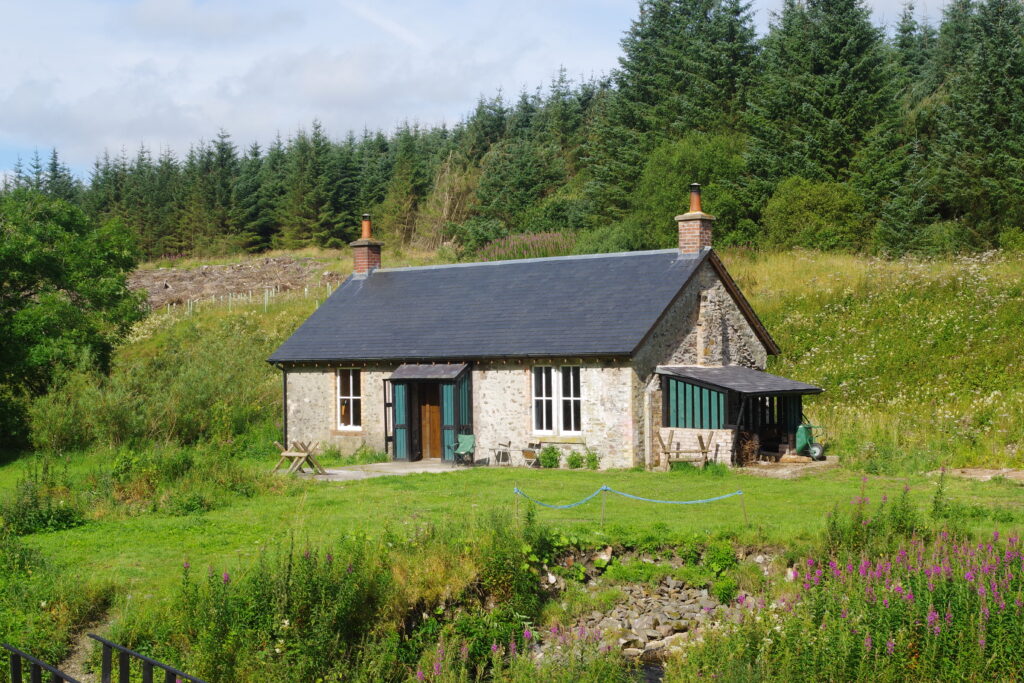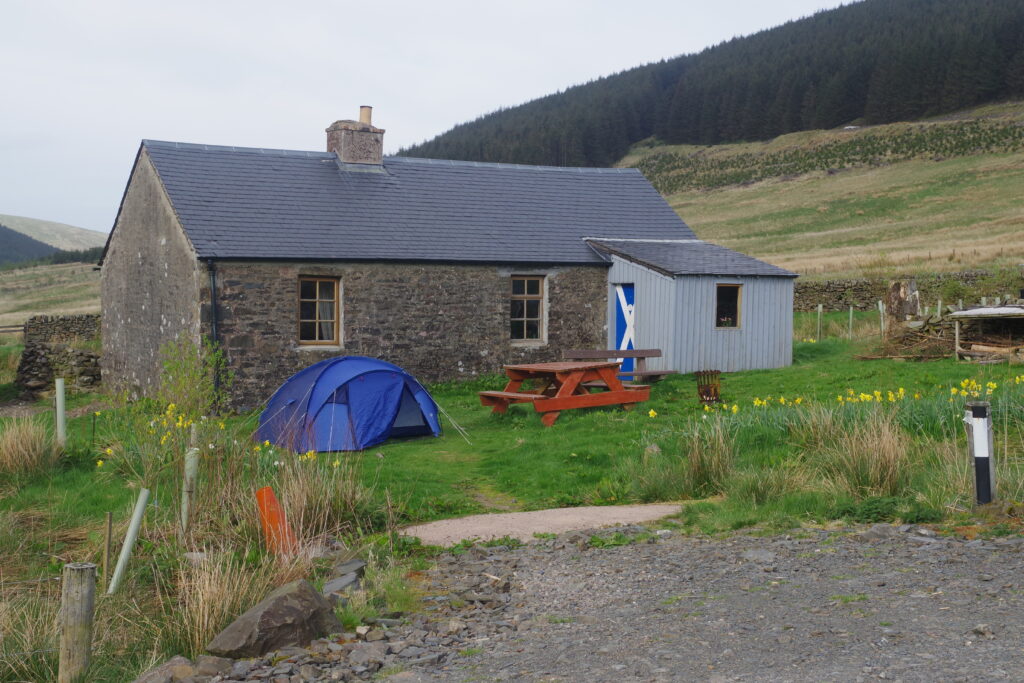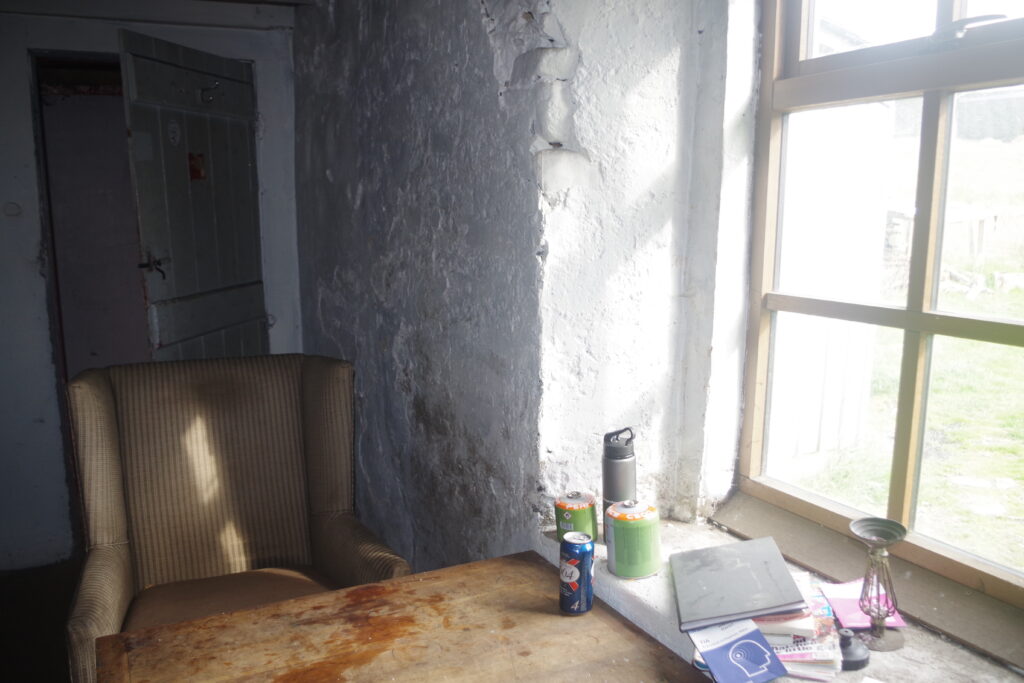If, like me, you’re a lover of the Scottish landscape, you’re probably familiar with bothies, a network of basic shelters across rural Britain that provide free accommodation and rest facilities. Yes, you heard me – free. A typical bothy is a former farm cottage in a very remote location, that provides somewhere dry to eat or sleep…and that’s about it. Some have rudimentary toilets, and one has electricity, but mostly they’re very simple indeed. If you take the right camping gear with you, though, they can be wonderful places, especially with a fire going. You may have the bothy to yourself, or you may find yourself one of many – they’re unpredictable and slightly anarchic places, but given the age we live in, they’re remarkable survivors that feel like they stick up two fingers to capitalism.
There are just shy of a hundred or so bothies in Scotland, with a few more in the north of England and North Wales. Most of them are looked after by the Mountain Bothies Association, an organisation founded in the 1960s to preserve and maintain places that were very unofficially used by walkers and climbers in the know.
I started using bothies in 2017, having known vaguely about them before that, but the birth of my interest was the publication of “The Scottish Bothy Bible” that year. I’m aware this book is considered somewhat controversial, but without it, and its excellent photography, I wouldn’t have discovered the amazing resource that bothies are.

Some people blame the book for antisocial behaviour and an increase in problems at various bothies, but these have always been issues on and off over the years. As for me, after my first bothy visit, I immediately joined the MBA, and since 2019, I’ve been a volunteer, helping to look after Will’s Bothy in the Scottish Borders. I’m very proud of this wonderful place, and I’m pleased to report it gets regularly visited by a steady stream of grateful and responsible users. It brings me enormous satisfaction to be part of the team responsible for keeping this building available.
As part of that, I’ve just attended a meeting of the Southern Scotland area of the MBA. Held in Ettrick on Saturday, it was a chance for us volunteers to meet with each other, find out what’s happening at other bothies, and discuss plans for future projects. The MBA has funds available to us for improvements, and many bothies have gained toilets in recent years. Other projects include looking after the fabric of the buildings (Will’s needs new guttering) and adding to the facilities with things like picnic tables and bunks, to make things more comfortable and practical for visitors.
It’s a fairly long drive for me to get to Ettrick, so I didn’t fancy heading back the same day. A little group of us carried on along the road to Over Phawhope bothy afterwards, and we spent the night there. OP, as it’s generally known to regulars, sits fairly close to the road on the Southern Upland Way, and is therefore a popular and busy bothy. Not long after the half dozen or so of us who had been at the meeting arrived, another four people showed up, all of whom had been walking.


It made for the kind of night that makes bothying such fun. It was warm enough to sit at the picnic table outside, where we ate, drank and talked, watching the sun sink over one hill and the moon rise over another. Stories and experiences were shared, and opinions were aired. We then settled down to sleep in the basic but spacious shelter that OP provides – some in the bothy itself, some in the byre next door that provides a bit of overflow space, and two in a tent.
The following day, I heated my breakfast over the stove and packed up at a leisurely pace before heading home again. This was only my second bothy visit since they officially reopened in July last year (most were physically unlocked during the pandemic, but weren’t supposed to be used), and it’s immediately made me crave more. I wrote about my last visit here, but I think this one made me freshly appreciate bothies because I’d freshly come from discussing their continued provision, maintenance and running.
There’s some robust opinions out there on the threats and issues facing bothies. Some are convinced that publicising them too much encourages misuse or makes them too busy to be sustainable, and curse anyone who dares make them easy to find. Much as I like having bothies to myself, I would never have discovered them if they didn’t get at least some publicity, and I get a bit annoyed with a certain type of person (mostly older men) who feel they have a divine right to hog bothies for themselves. I’ve often thought that the biggest threat to bothies is probably well-meaning legislation applying to other things, designed to protect the environment or promote health and safety. I worry that someone will think “hang on, we can’t have people out there just doing what they want in completely unregulated spaces” and pass laws that prevent bothies being used. Thankfully it hasn’t happened yet, and bothies remain a kind of invisible parallel universe, where you can disappear and escape from the horrors of modern capitalism for a while.
It’s a rare bothy that has a mobile signal, so if you want to go off the grid, there’s nowhere better. It was in a bothy that I read Cal Newport’s “Digital Minimalism”, a book that started me off on the road of weaning myself off social media and smartphones. They’re perfect places to recharge, think, relax and stare into space for a while – quite literally, in fact, given that the view of the stars from most bothies is completely free of light pollution.
Bothies are not without their problems, of course. There’s horror stories aplenty out there about miserable nights ruined by drunken idiots, a few bothies have closed and one or two have been lost to fire. Without a car, they can be difficult places to reach, and very few are easily accessible by public transport, which presents sustainability problems. They have to be sufficiently remote in order to work at all – there’s a close relationship between ease of access and the level of antisocial behaviour. That said, though, in a world where almost all spaces are blighted by commercialism and the profit motive, you’ll find very few places as democratic, egalitarian and freely accessible as this. As long as you’re fit enough for the hike in, and can get yourself to the start of the trail, there’s very little stopping you from making the most of these magical buildings. When I say “magical”, they are potentially cold, damp, dirty and full of mice and insects, which is enough to put a lot of people off, but if you can see past that, a world of adventure and discovery awaits. Honest. 🙂